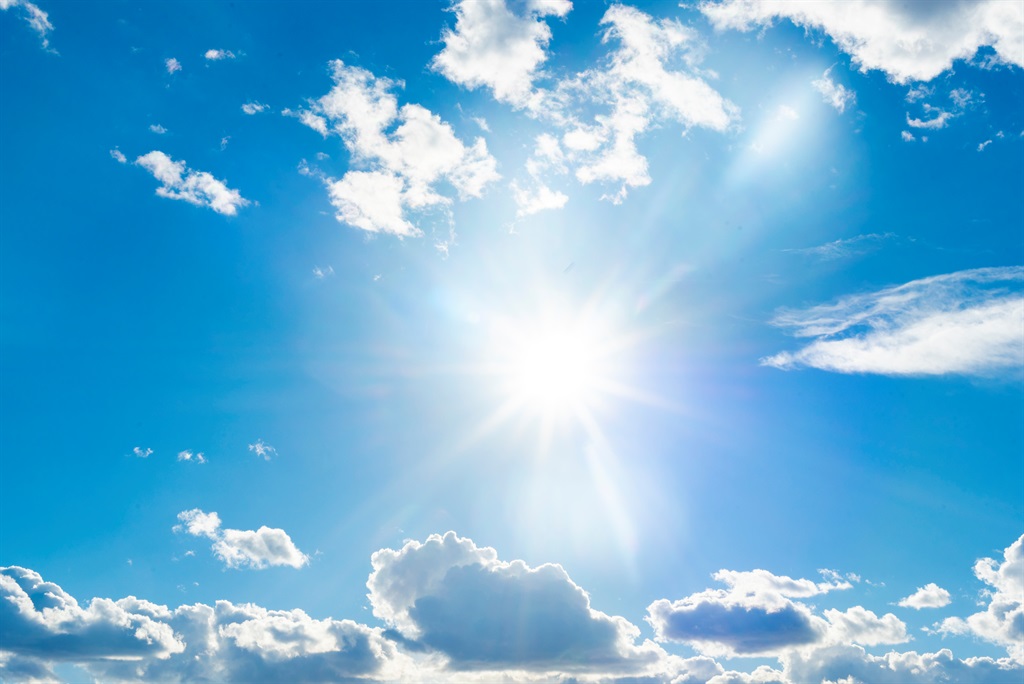
- Residents in South Africa's inland provinces are bracing for a cold front, just after a few days of "very hot weather".
- A scientist described the weekend temperatures in places like Upington and Graaff-Reinet as a "mind-blowing heatwave".
- But South Africans have experienced these temperatures before, and the heat is "normal" for this time of year, according to the weather service.
- For climate change news and analysis, go to News24 Climate Future.
A cold front, pushing hot air inland, is behind the recent hot temperatures felt in parts of the country over the past week, according to the South African Weather Service (SAWS).
A graph circulating on X (formerly Twitter) shows what is described as a "mind-blowing heatwave" over the weekend.
The tweet cites "never seen before" temperatures during this time of year at weather stations in Fort Beaufort, Augrabies Falls, Twee Rivieren, Umtata, Upington and Graaff-Reinet.
Brutal early spring scorcher in South Africa.The usually cool oceanic town of East London rose to 40.6C with dry berg winds, but the heat was extreme at high elevations too:40.4C at Babanago at 770m asl and 39.7C at Pietermaritzburg 673m asl.In Botswana >38C at 1000m asl. https://t.co/bAGvB1B5fl
— Extreme Temperatures Around The World (@extremetemps) September 10, 2023
The data is based on estimates from the European Centre for Medium-Range Weather Forecast.
Andrew Pershing, vice president for science at the nonprofit climate communications group Climate Central, said that there is a "strong fingerprint" of climate change on the temperatures reflected.
He told News24 via email:
The SAWS noted the estimates cited in the tweet. But it also pointed out that these stations have had higher maximum temperatures for September in the past:
The SAWS records show:
- Fort Beaufort: 41.5 degrees C on 20 September 2020.
- Augrabies: 46 degrees C on 8 September 2000.
- Twee Rivieren: 40.7 degrees C on 24 September 2017.
- Umtata: 44 degrees C on 30 September 1983.
- Upington: 39.3 degrees C on 30 September 1984.
- Graaff-Reinet: 39.0 degrees C on 26 September 1997.
"The hot weather of the past week is regarded as normal for this time of the year," the SAWS added. Currently, no temperature records have been broken.
On Monday, the weather service had forecast warm, and in some cases hot, conditions for Gauteng, Mpumalanga, Limpopo, North West and the Free State.
But by Tuesday, a cold front that had brought snow in parts of the Western Cape and southwestern Northern Cape started moving east, with the SAWS forecasting a "significant drop in temperatures". It also warned of snow over the southern Drakensberg in the Eastern Cape and the extreme southwestern parts of KwaZulu-Natal.
For Wednesday, the SAWS forecasts a cloudy and cold day for most provinces - including Gauteng, Limpopo and Mpumalanga - and warned of high fire danger conditions in parts of the Western Cape, Northern Cape, Eastern Cape, North West and Free State.
Hot summer
Going forward, the upcoming summer season will be "warmer than normal" due to El Niño.
El Niño - a weather phenomenon associated with warmer, dry conditions in southern Africa - is expected to persist in most of the summer months. El Niño also generally increases global temperatures in the year after it develops, according to the World Meteorological Organization.
READ | Expect extreme heat, risk of floods this summer as El Niño hits SA, says weather service
The weather service's seasonal forecast – which may change – also expects above-normal rainfall for most parts of the country from mid-spring (this is from September to November) to late spring (October to December).
The central region – North West, Free State, Eastern Cape and Northern Cape – is expected to experience below-normal rainfall from early summer (November to January), according to the seasonal forecast.
The SAWS also noted that the rainy weather in Cape Town, which to some seems extended into September, is also normal for this time of year.




 Publications
Publications
 Partners
Partners












